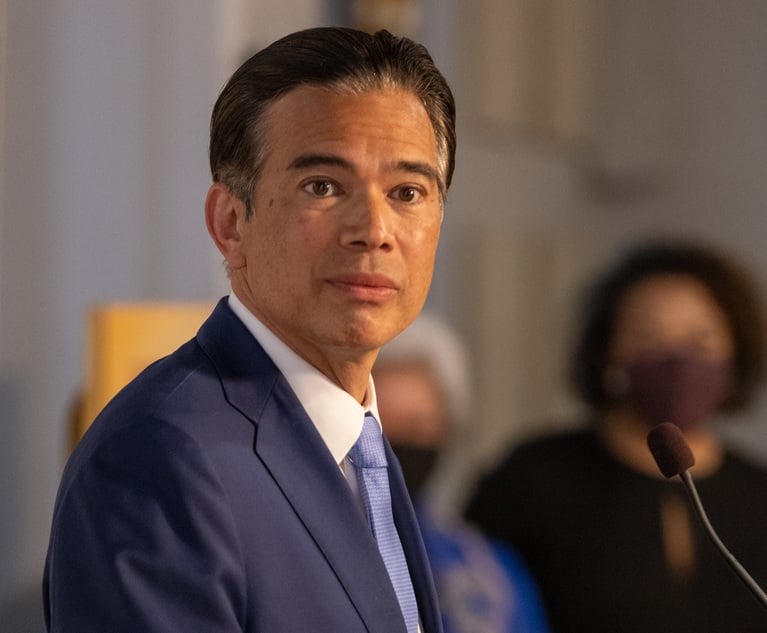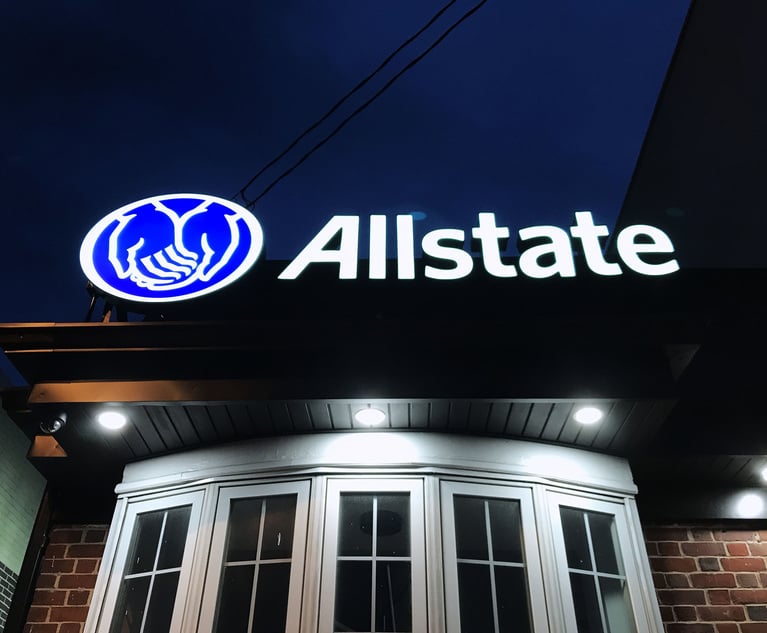3 Takeaways From Changes to California's Proposed Cannabis Regs
Companies had lobbied the state Legislature and other policymakers this year to keep local delivery restrictions out of state law.
October 19, 2018 at 06:53 PM
4 minute read

California regulators on Friday announced dozens of changes to proposed rules for the state's recreational and medicinal marijuana markets, kicking off a frenetic 15-day public comment period.
The amendments to proposed rules issued in July are tucked into 318 pages of documents released by the Bureau of Cannabis Control, the Department of Food and Agriculture and the Department of Public Health. The changes respond to some of the 6,000 public comments that were submitted to the state this summer.
Interest groups were still sifting through the proposed new language Friday afternoon but some changes—and just as importantly, the rules that stayed the same—were readily apparent. Here are a few takeaways.
➤➤ Delivery services remain protected.
The Bureau of Cannabis Control did not add restrictions on where delivery companies can operate. Police groups, the League of California Cities and the United Food and Commercial Workers lobbied for regulatory language that would allow local governments, many of which already prohibit retail sales and grows, to ban pot deliveries within their boundaries.
“It's unfortunate the Bureau of Cannabis Control made the decision to undermine the authority of local officials,” David Swing, president of the California Police Chiefs Association, said in August. He added: “The proposed regulations give unrestricted access to the cannabis delivery industry and open the floodgates to a number of public safety risks.”
Companies including WeDrop Cannabis Delivery, CannaWagon and Weedmaps lobbied the Legislature and other policymakers this year to keep the local delivery restrictions out of state law.
There is some new language to the cannabis delivery rules. The final rule would prohibit delivery “to a school providing instruction in kindergarten or any grades 1 through 12, day care center, or youth center.”
➤➤ License costs will be lower (for some).
Regulators have lowered the annual license fees for smaller operators. Previously, retailers with revenues of up to $750,000, for instance, would have had to pay $4,000 for a 12-month license. The proposed changes create lower revenue caps, so now retailers sales under $500,000 will pay $2,500.
Costs will be cheaper for small-scale cannabis event organizers, micro-businesses, distributors and labs. Industry advocates had complained that high projected fees were encouraging some operators to stay in the black market.
Bigger operations will still see big license fees. Retailers with sales of $7.5 million or more will pay $96,000 year for a license under the rules.
➤➤ Packaging and promotion restrictions abound.
The changed rules include new language mandating more child-proof packaging and more specifics about labeling cannabinoid content. Amendments also clarify that cannabis products can't have the “realistic or caricature” shape of a human being. The same prohibitions were already in place for products resembling animals, insects and fruit.
As for advertising, retailers will now be barred from promoting giveaways of non-cannabis products—not just marijuana itself. Ads can't depict anyone under the age of 21 instead of 18. And billboards can't be located on highways within 15 miles of the California state line.
The final regulations, which will be issued some time after the 15-day comment period, must be sent to the Office of Administrative Law for review on or before Dec. 3.
Read more:
Sonoma Cannabis Farm Says Complaining Neighbors Have No Case
Higher Law: Canada Goes Legal | Ex-Polsinelli Partners See Green | Who Got the Work
Lawyers Advising on State Cannabis Won't Break Bar Rule
New Cannabis Industry Suit Alleges Fraudulent Business Practices
This content has been archived. It is available through our partners, LexisNexis® and Bloomberg Law.
To view this content, please continue to their sites.
Not a Lexis Subscriber?
Subscribe Now
Not a Bloomberg Law Subscriber?
Subscribe Now
NOT FOR REPRINT
© 2025 ALM Global, LLC, All Rights Reserved. Request academic re-use from www.copyright.com. All other uses, submit a request to [email protected]. For more information visit Asset & Logo Licensing.
You Might Like
View All
Invoking Trump, AG Bonta Reminds Lawyers of Duties to Noncitizens in Plea Dealing
4 minute read

California's Chief Justice Starts Third Year With Questions About Fires, Trump and AI
4 minute read
Willkie Farr & Gallagher Drives Legal Challenge for Uber Against State's Rideshare Laws
5 minute readTrending Stories
Who Got The Work
J. Brugh Lower of Gibbons has entered an appearance for industrial equipment supplier Devco Corporation in a pending trademark infringement lawsuit. The suit, accusing the defendant of selling knock-off Graco products, was filed Dec. 18 in New Jersey District Court by Rivkin Radler on behalf of Graco Inc. and Graco Minnesota. The case, assigned to U.S. District Judge Zahid N. Quraishi, is 3:24-cv-11294, Graco Inc. et al v. Devco Corporation.
Who Got The Work
Rebecca Maller-Stein and Kent A. Yalowitz of Arnold & Porter Kaye Scholer have entered their appearances for Hanaco Venture Capital and its executives, Lior Prosor and David Frankel, in a pending securities lawsuit. The action, filed on Dec. 24 in New York Southern District Court by Zell, Aron & Co. on behalf of Goldeneye Advisors, accuses the defendants of negligently and fraudulently managing the plaintiff's $1 million investment. The case, assigned to U.S. District Judge Vernon S. Broderick, is 1:24-cv-09918, Goldeneye Advisors, LLC v. Hanaco Venture Capital, Ltd. et al.
Who Got The Work
Attorneys from A&O Shearman has stepped in as defense counsel for Toronto-Dominion Bank and other defendants in a pending securities class action. The suit, filed Dec. 11 in New York Southern District Court by Bleichmar Fonti & Auld, accuses the defendants of concealing the bank's 'pervasive' deficiencies in regards to its compliance with the Bank Secrecy Act and the quality of its anti-money laundering controls. The case, assigned to U.S. District Judge Arun Subramanian, is 1:24-cv-09445, Gonzalez v. The Toronto-Dominion Bank et al.
Who Got The Work
Crown Castle International, a Pennsylvania company providing shared communications infrastructure, has turned to Luke D. Wolf of Gordon Rees Scully Mansukhani to fend off a pending breach-of-contract lawsuit. The court action, filed Nov. 25 in Michigan Eastern District Court by Hooper Hathaway PC on behalf of The Town Residences LLC, accuses Crown Castle of failing to transfer approximately $30,000 in utility payments from T-Mobile in breach of a roof-top lease and assignment agreement. The case, assigned to U.S. District Judge Susan K. Declercq, is 2:24-cv-13131, The Town Residences LLC v. T-Mobile US, Inc. et al.
Who Got The Work
Wilfred P. Coronato and Daniel M. Schwartz of McCarter & English have stepped in as defense counsel to Electrolux Home Products Inc. in a pending product liability lawsuit. The court action, filed Nov. 26 in New York Eastern District Court by Poulos Lopiccolo PC and Nagel Rice LLP on behalf of David Stern, alleges that the defendant's refrigerators’ drawers and shelving repeatedly break and fall apart within months after purchase. The case, assigned to U.S. District Judge Joan M. Azrack, is 2:24-cv-08204, Stern v. Electrolux Home Products, Inc.
Featured Firms
Law Offices of Gary Martin Hays & Associates, P.C.
(470) 294-1674
Law Offices of Mark E. Salomone
(857) 444-6468
Smith & Hassler
(713) 739-1250






